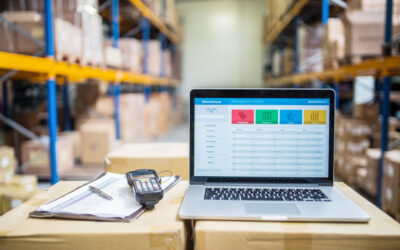When you’re weighing up your options for asset tracking software, asset tags will come up. Asset tags are physical tags that you stick onto your assets to automate your location tracking and speed up your asset audits.
With asset tags, you can:
- Collect data faster
- Mitigate risks
- Run speedy audits
- Bulk update asset locations
- Bulk check out assets
But what type of tag should you use? QR codes or RFID tags?
How Do RFID And QR Codes Work?
RFID and QR code asset tags are physical tags that you stick onto your assets. They’re globally unique and link up to your asset tracking software to automate some operations.
Your asset tracking software will contain unique asset profiles of all of your assets, hence needing a unique tag. Once your assets have been tagged, you’ll be able to scan these tags to open up your asset profiles.
So, if you notice an asset has an issue, all you need to do is scan the tag and report said issue. Then, you know which asset has a fault, what the fault is, where the asset is, and who reported it.
Asset tags also create the ability to perform bulk actions. So, if you need to double-check your assets are all in the correct location, you simply need to click “audit” and scan the tags.
QR codes and RFID asset tags both have these benefits. However, they differ in some ways.
Benefits Of RFID
RFID tags open up more opportunities in terms of speed, automation, and distance. For example, if you’re using a fixed RFID asset tracking system, asset location updates are entirely automated and don’t need any manual input.
In terms of speed, RFID asset tags are great as you can bulk scan assets. So, you’ll have a third-party handheld reader that you’ll connect to your asset management app using BlueTooth. Then, if you want to run an audit, you simply need to press “audit” and pull the trigger on your handheld reader.
Then, there are also benefits in terms of high-value asset management. RFID tags use a radio frequency to be read, which means that you don’t need a line of sight to scan your assets. This means that you’ll be able to use RFID tags on paintings and priceless bottles of wine as you can conceal them.
Benefits Of QR Codes
QR codes have less automation than RFID tags, but may be more suitable for your business, depending on your needs. Primarily, QR codes are easy to set up and use in an instant and are cheaper. You don’t need any external hardware. Instead, you can just use your smartphone, which instantly saves you upwards of £1,000.
QR codes still allow for bulk actions. The difference is that you need to physically see and scan the tags, you can’t scan from a distance and the tags need to be visible. This means that you still save time, but it’s less time saved than when you use RFID tags.
Both tags are future-proof, as neither hardware is going anywhere, but if you use RFID tags you may have to contend with interference from your assets which can affect tag readability. Readability with QR code asset management, however, can be mitigated by using tags that can withstand more weathering as the only factor in readability is the durability of the tag.
Using Asset Tags With Asset Tracking Software
In short, whichever one you opt for depends on your needs. With itemit, however, you can use a combination of both. This means that you can start off with the cheaper, more manual option then scale up to using RFID asset tags.
Overall, both generate a return on investment, but if you’re tracking a smaller number of assets this return on investment will be limited by setup costs with RFID.
So, you’ll never go wrong with QR codes, but RFID tags unlock more functionality, speed, and the ability to track higher value assets.
To find out more about how itemit’s asset tracking software can help your business you can contact the team at team@itemit.com. You can also fill in the form below to start your 14-day free trial.
RFID & QR Code Asset Tags
Choose a better way to track your assets
Start your free 14-day trial now
Instant access. No credit card details required.
You can also start your 14-day free trial by filling out the form below, or you can contact us at team@itemit.com or at 01223 421611.
Or, you can check out these blogs:
What Are the Best Asset Management Tracking Tools?
3 Ways Fixed Asset Tracking Software Saves you Time and Money
How to Track Maintenance with Heavy Equipment Maintenance Software
Latest posts
itemit Blog
Tips, guides, industry best practices, and news.
Latest posts
itemit Blog
Tips, guides, industry best practices, and news.
Related articles
How to Optimise Product Inventory Management
Learn how to optimize product inventory management with effective strategies, a product inventory management system, and best practices for efficiency.
Buffer Stock in Inventory Management: How It Optimizes Supply Chain Efficiency
Learn the meaning of buffer stock, its role in inventory management, and how it optimizes supply chains. Explore strategies and tools for effective stock management.
What Is an Online Inventory Management System?
Discover what an online inventory management system is, how it works, and why it’s essential for efficient inventory tracking and business success.


